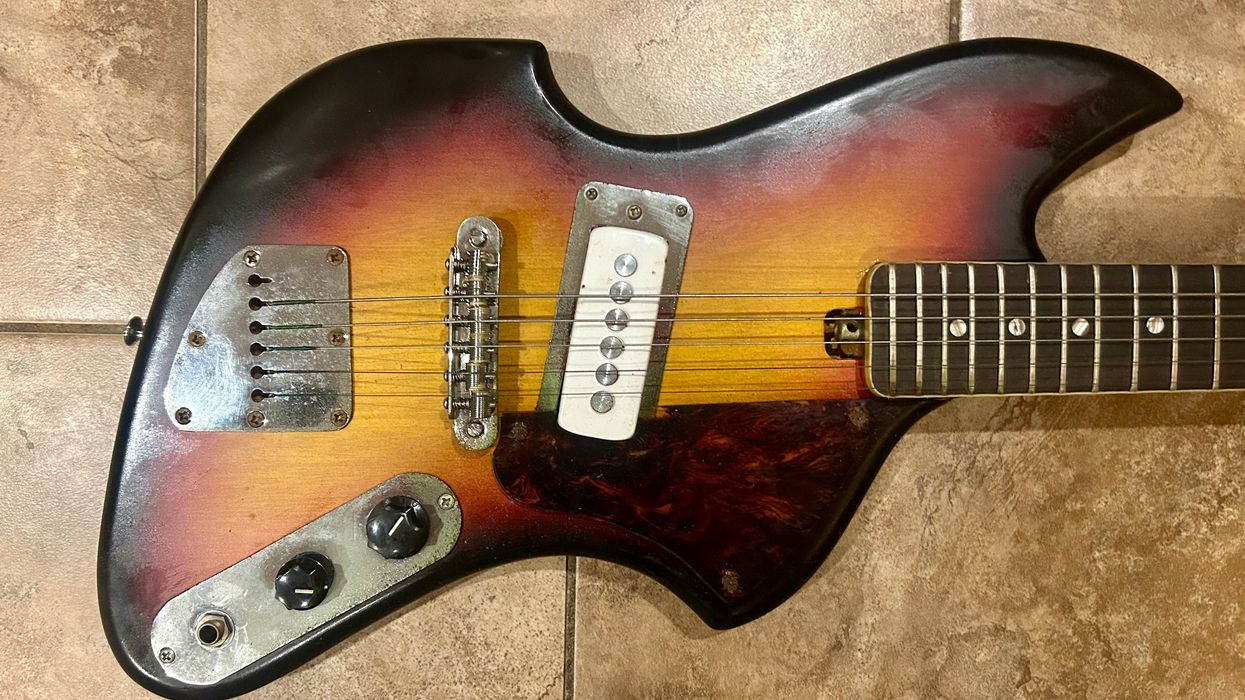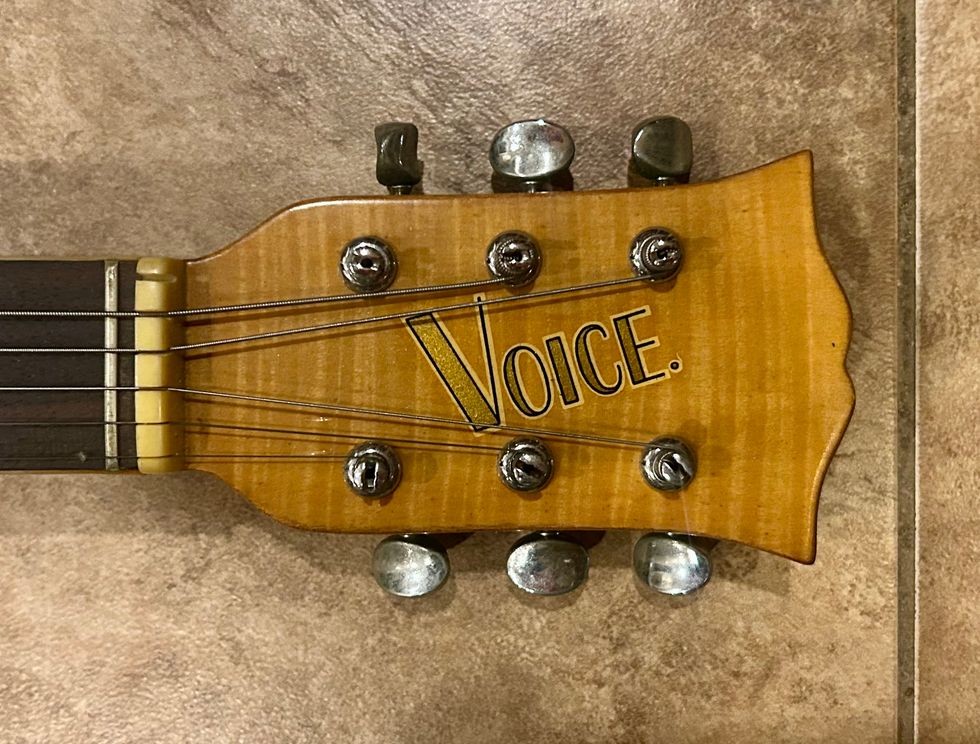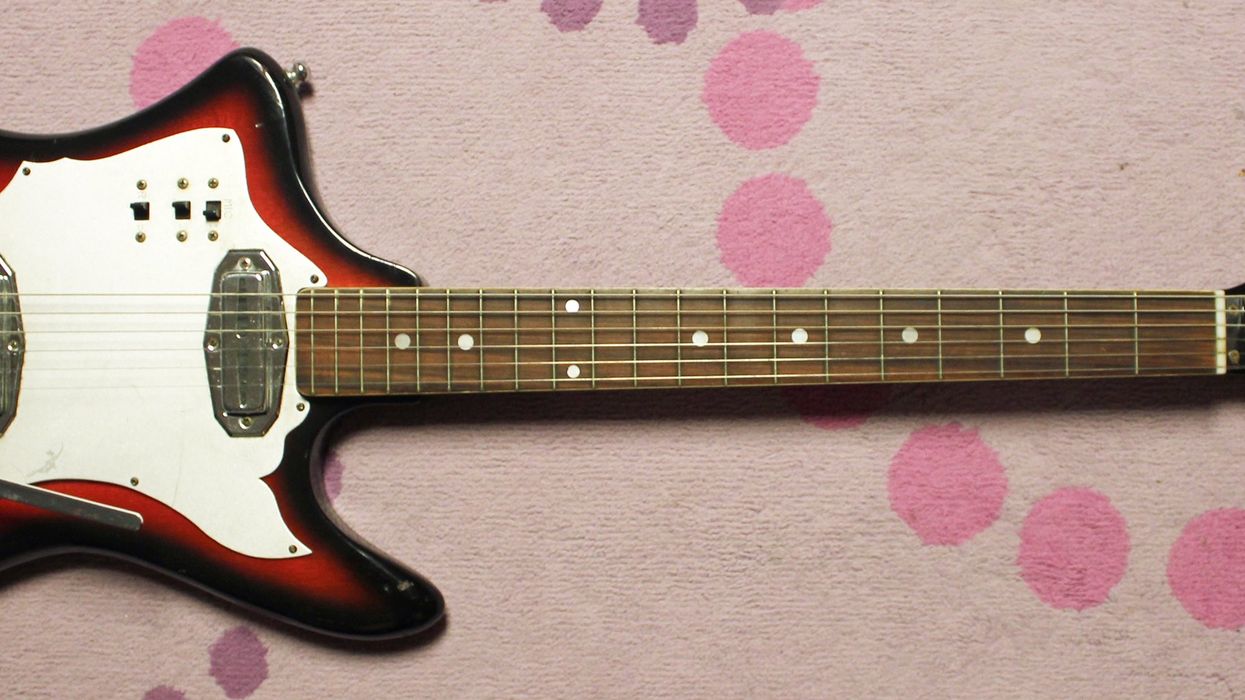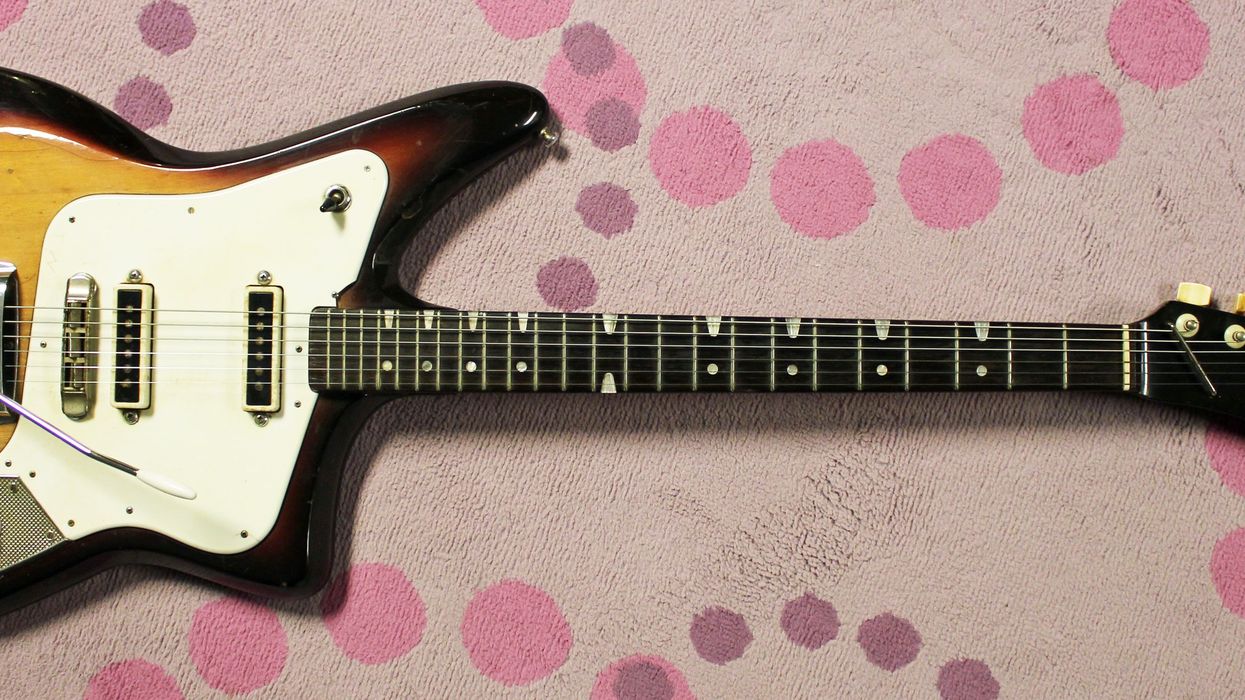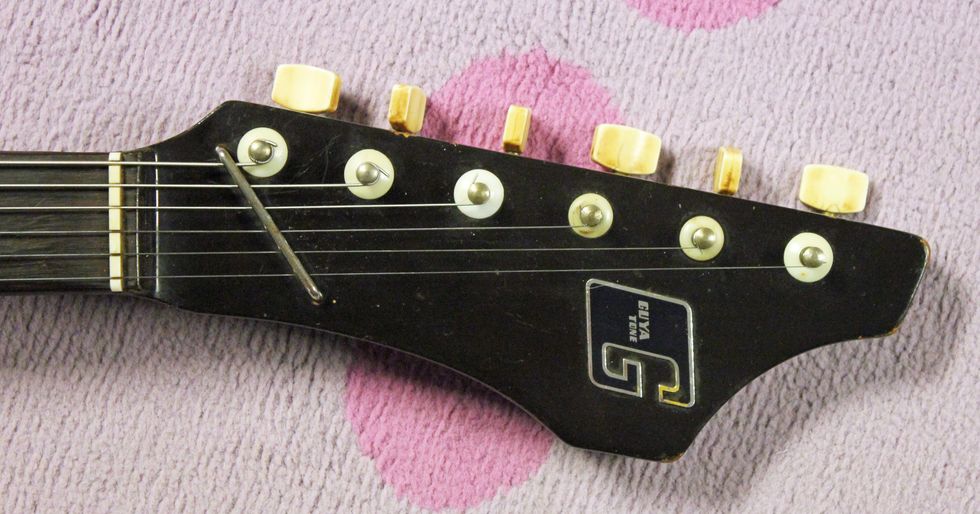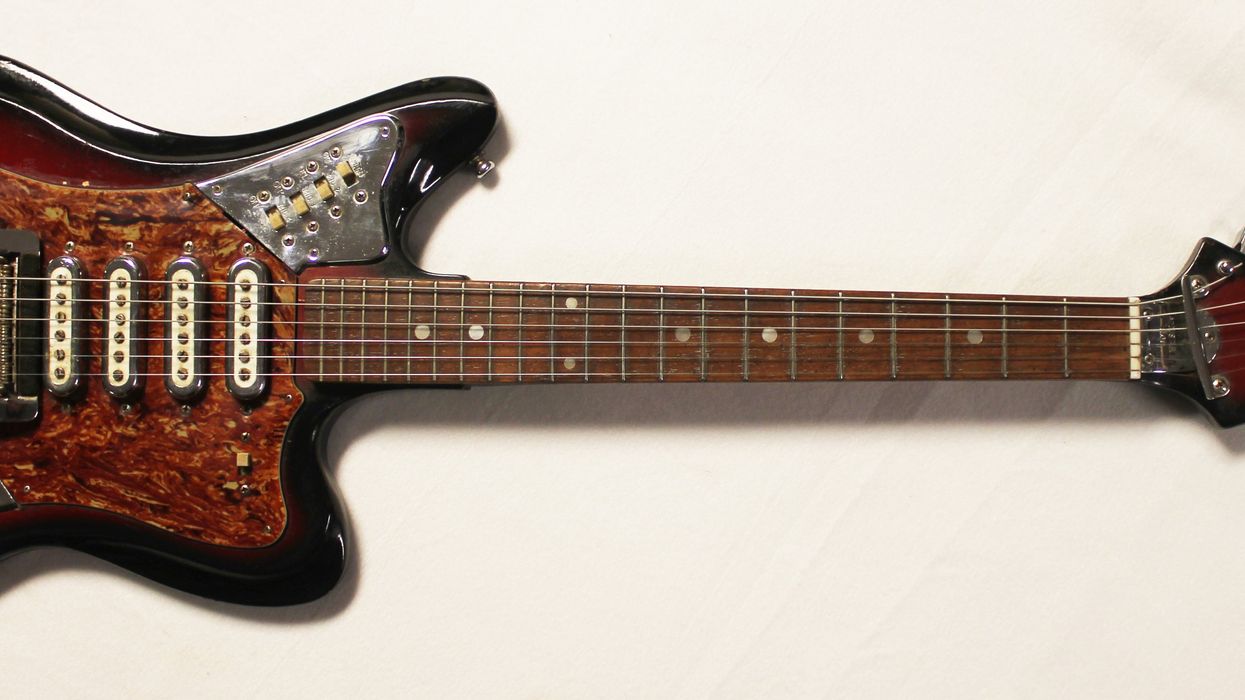Last month, I was talking about fragile guitars and how I’m always afraid of damaging or marring delicate things. Well, this month, I’ll take another look at a small hollowbody that, when I first got it, scared me in a different sort of way. Gentle reader, this guitar was alive—and I mean that in a sincere way. Good grief; this little guy vibrated and shook like an old-school 1970s stereo at full tilt! Let me introduce you to the St. George EP-85, dating to around 1964.
In the early days of guitar importing, there were a few Americans who ventured over to Japan, and Anthony George was one of the first. Mr. George owned several George Music Stores in upstate New York and one in Los Angeles, California. And, you guessed it, he used “St. George” as his brand name. He was influential in getting instrument manufacturer FujiGen Gakki up and running, and he was a rather prolific importer of Japanese guitars. He would often make specifications to Japanese factories and ask for certain models. Many of his early designs were originals, and kinda cool in their own right. The guy had an eye for design and sales, so most of his guitars sold pretty well. During one of my trips to Japan, I got the chance to look over sales receipts and shipping orders (FujiGen saved everything), and Anthony George was all over the earliest records. (One of his grandsons is still around, and is a fine fella!)
Now, the St. George EP-85 was made by Kawai, since the company was earlier to the game than FujiGen. Kawai had already designed a few pickups and had a full woodworking factory, since their previous business was in making pianos. The Kawai company had several decades of woodworking experience, and it had amassed a stockpile of properly aged wood. Some of the finest wood I’ve ever seen can be found on the earliest Kawai guitars. Seriously, there’s gorgeous Brazilian rosewood and finely flamed maple on basic student models! I’m not usually a wood fanatic, but I have seen Japanese factories with whole warehouses full of 100-year-old wood, and I’ve seen drying facilities with classical music being pumped in so the wood can be happy, I guess. What I’m trying to say is that in the traditional Japanese manner, they take their art seriously, no matter what the medium. And this undersized EP-85 is a perfect example.
“Good grief; this little guy vibrated and shook like an old-school 1970s stereo at full tilt!”
I no longer own this guitar, but I remember my experience with it pretty clearly. I’m guessing that this model was designed to resemble an early 1960s Gibson ES-140T because of the size, single Florentine cutaway, and P-90-like pickups. The St. George has a similar wood construction to the ES-140T as well. I have some experience with older Gibson hollowbodies, because there was a Gibson retailer in my area, and I used to see some cool examples show up in the classified ads back in the day. I also own a 1956 Gibson ES-125, and that thing projects like a cannon! The St. George, though smaller, also projects well, and when I first played it, it was shakin’ all over! The guitar was one of the most resonant instruments I have ever owned! I have guitars hanging all over the walls here and I often just strum them and listen, or feel, for resonance. The EP-85 was always the belle of the ball!
The electronics feature a basic layout of two volumes and one tone knob, and then a pickup switcher located on the upper bout. The pickups, in common Kawai fashion, read out at around 4k. But also in Kawai fashion, the wiring is in series, so the middle position puts out close to 8k, which can really drive a small tube amp. Thankfully, the neck angle is serviceable, which really is a blessing since the truss rod isn’t adjustable.
For slide players, this guitar is the bee’s knees! It can handle a little overdrive without totally losing it, and the constant string contact allows for some control over the feedback. Otherwise this guitar wants to take off and fly into the feedback zone, which is always sort of a cool adventure.
This model only had a short run, and was gone from Kawai catalogs by around 1965. Those big white cupcake knobs and pickups help to place a date of the early 1960s, and as the years passed, so did the quality of Kawai electrics. The company did go through an insane design phase in the late 1960s, but none of the guitars shake like this one. And, I didn’t break it!
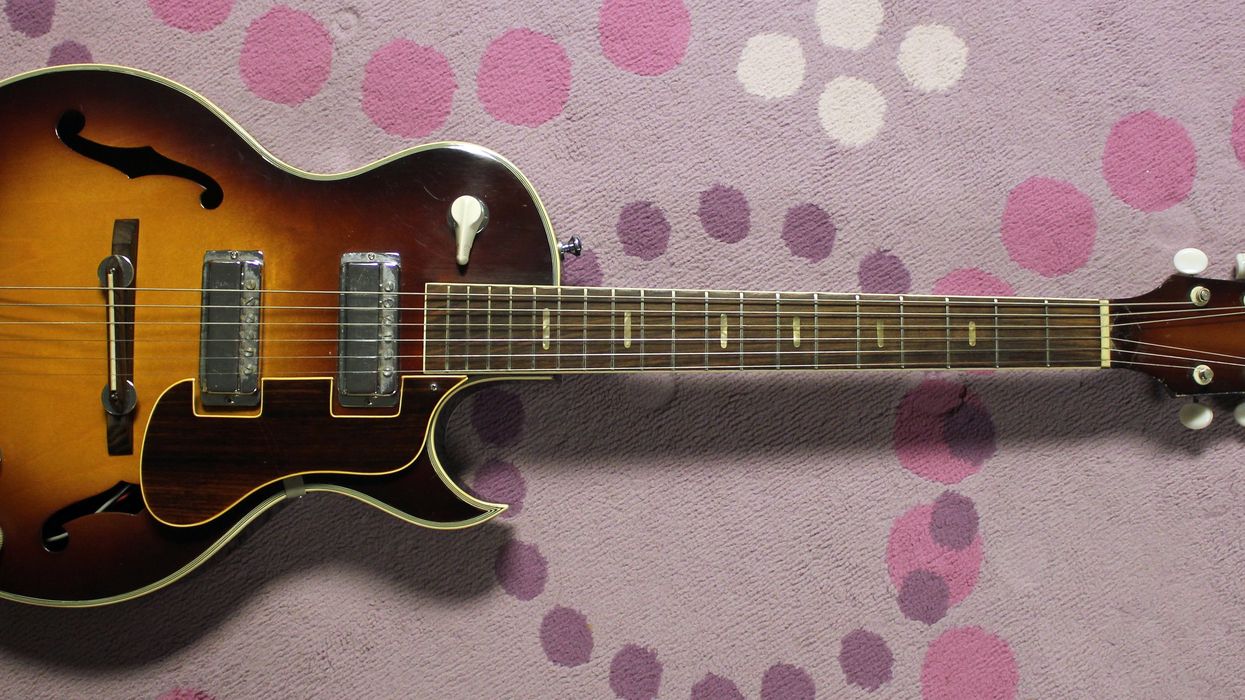

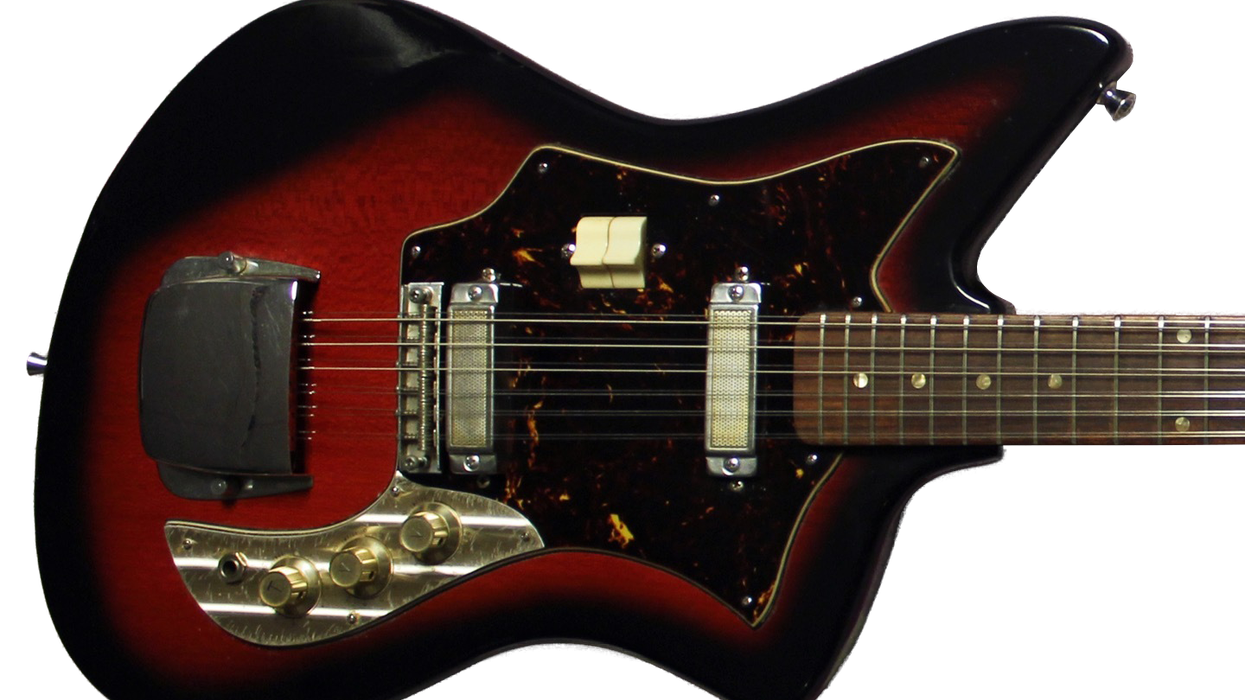
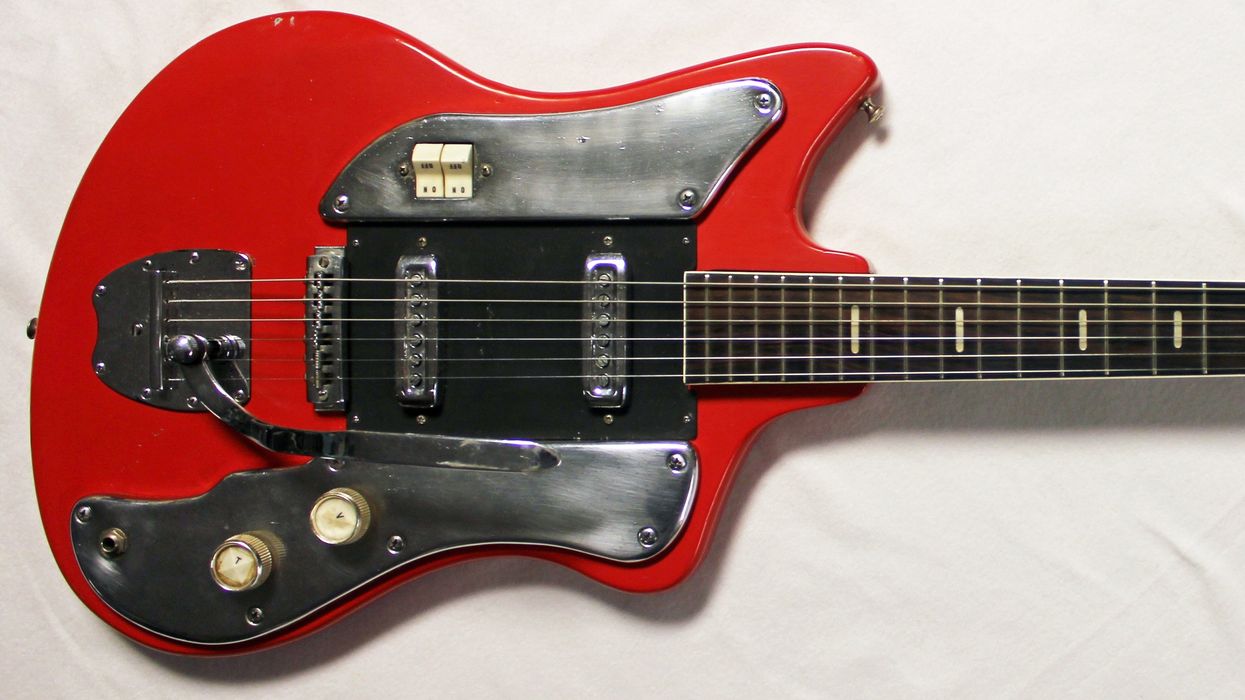
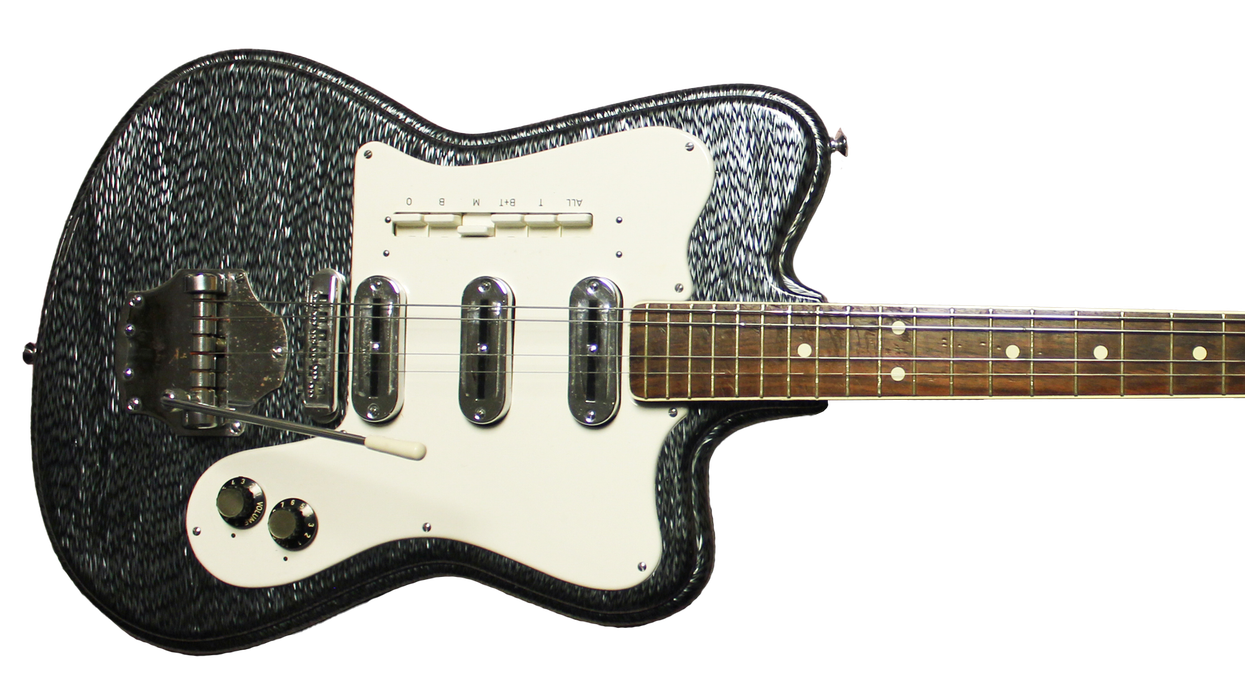
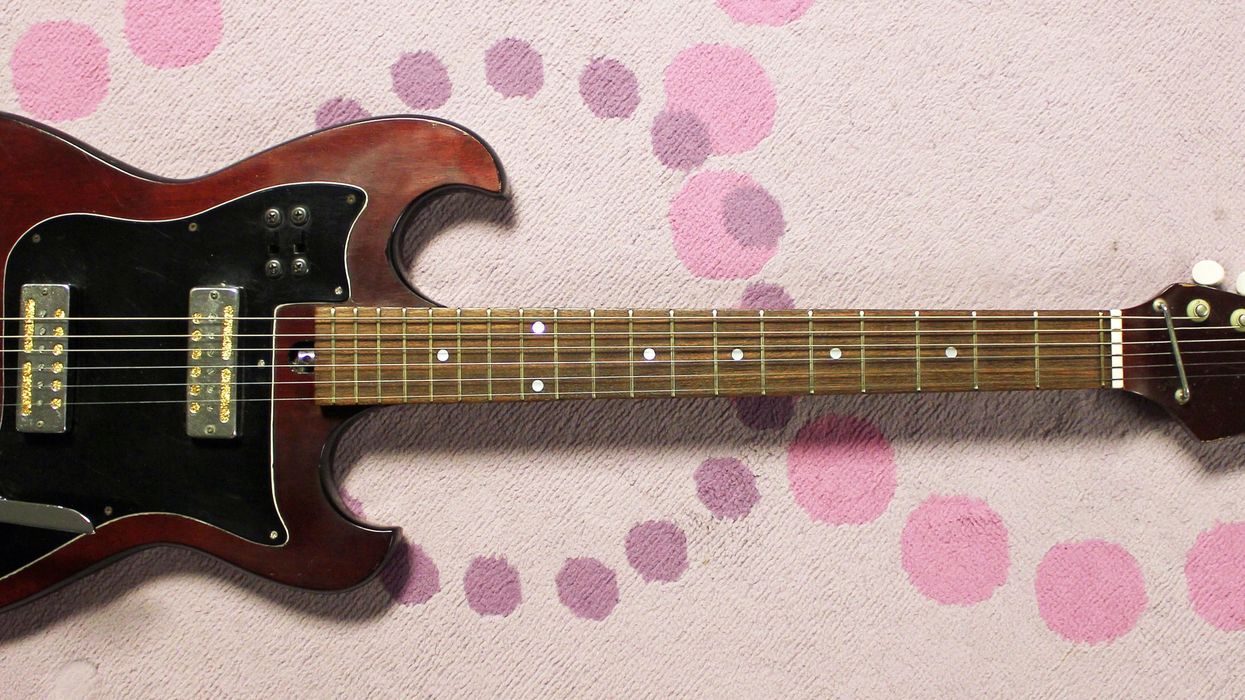
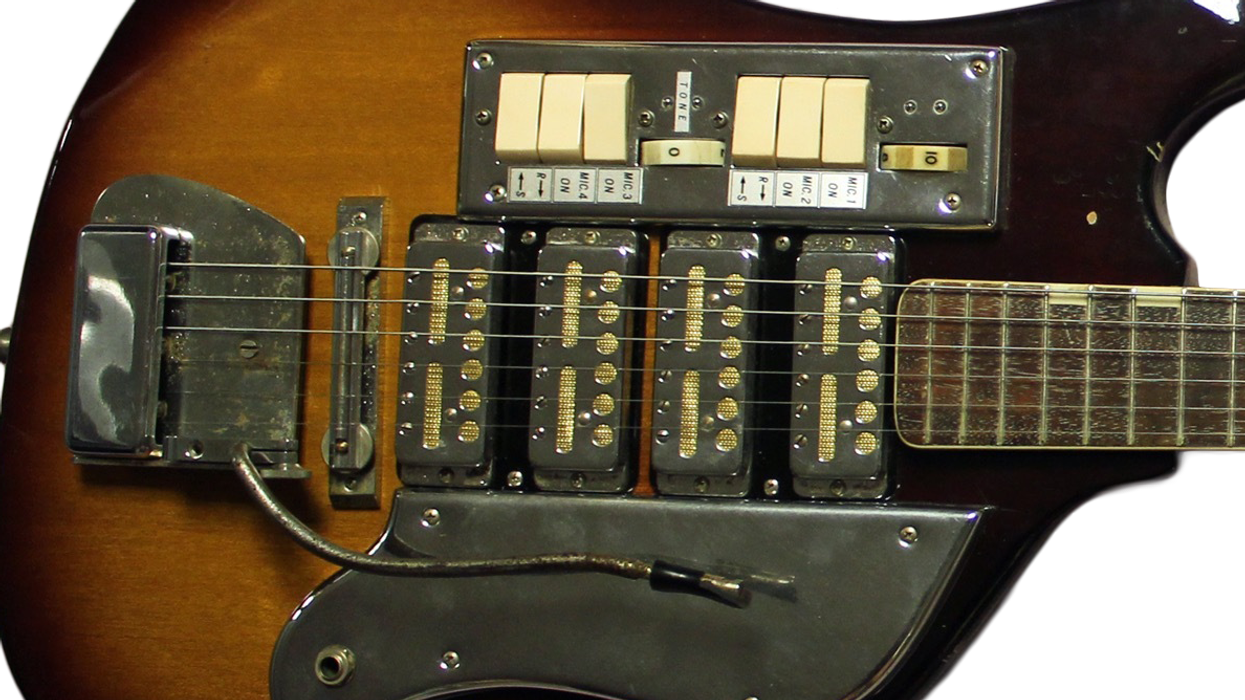
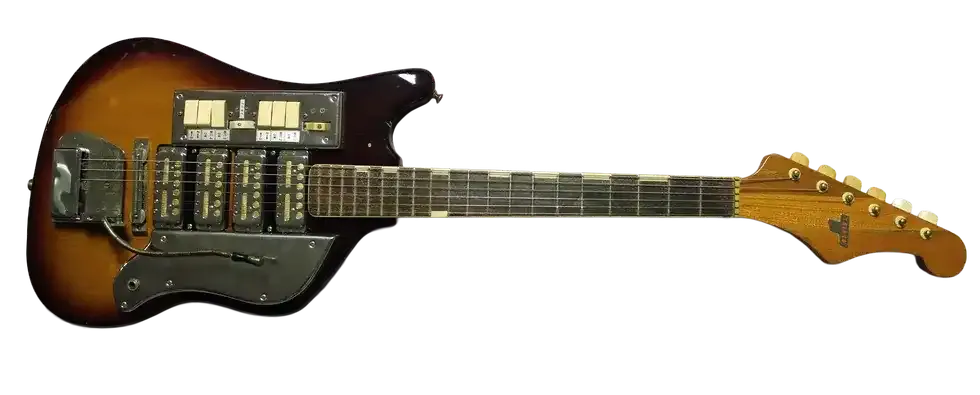
![Devon Eisenbarger [Katy Perry] Rig Rundown](https://www.premierguitar.com/media-library/youtube.jpg?id=61774583&width=1245&height=700&quality=70&coordinates=0%2C0%2C0%2C0)





